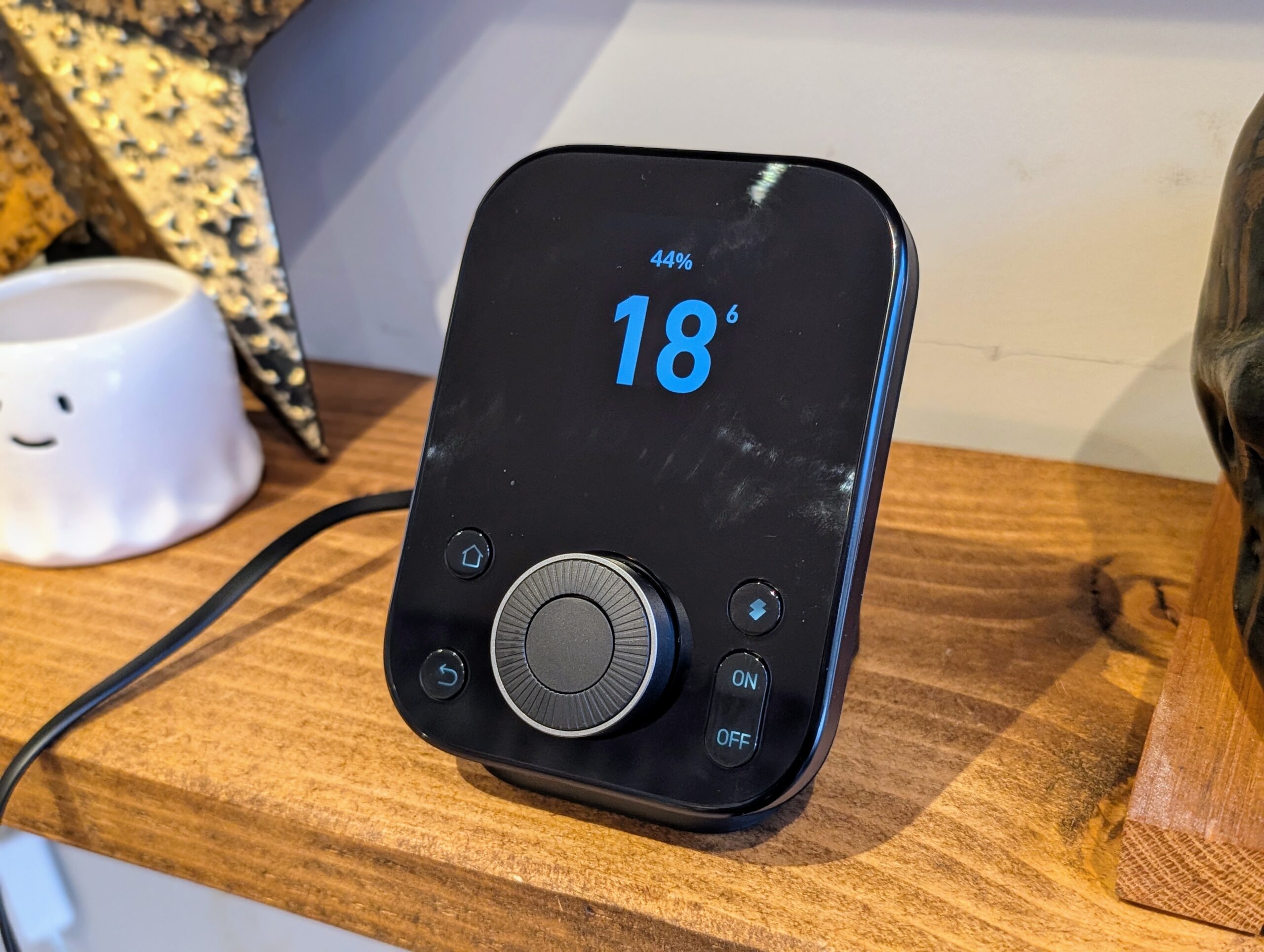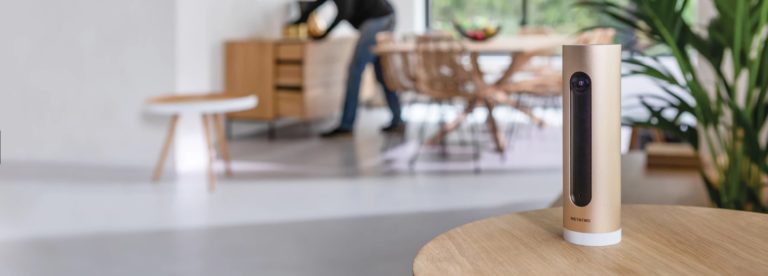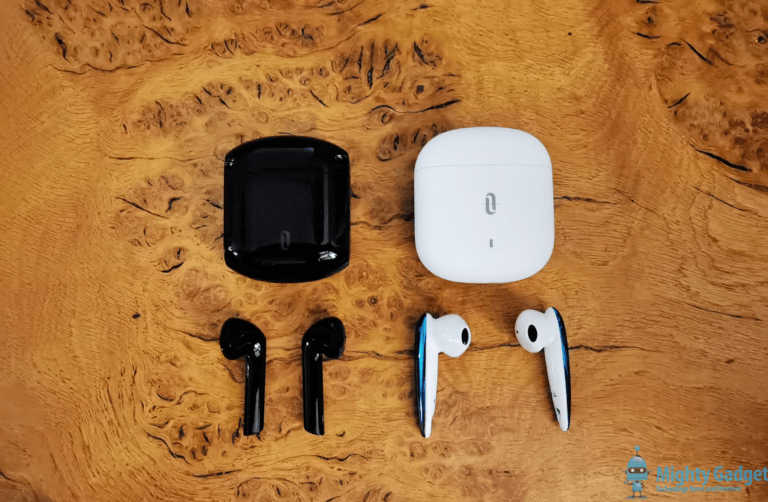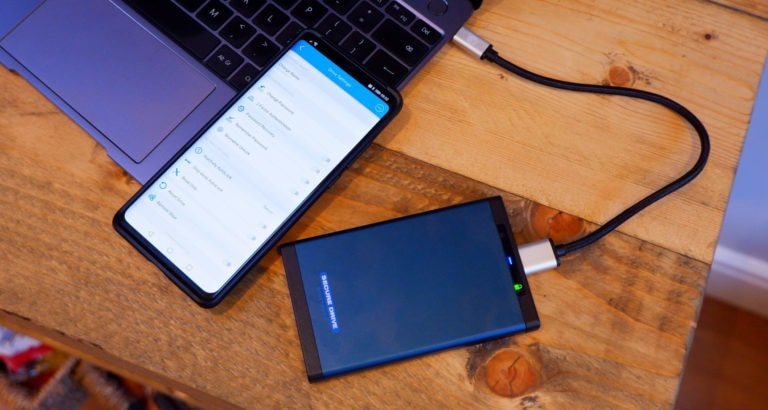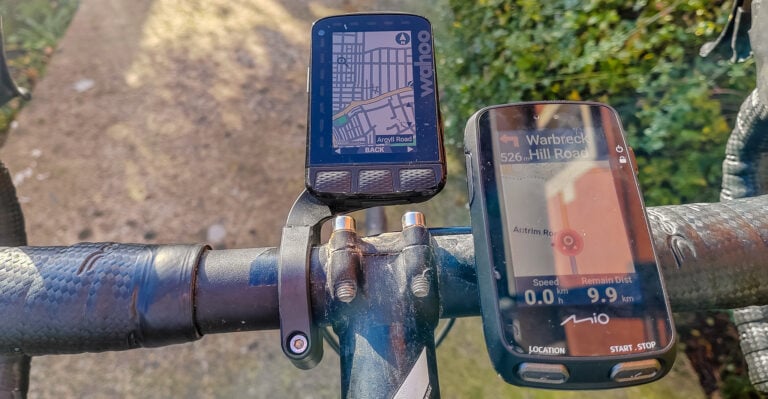Any links to online stores should be assumed to be affiliates. The company or PR agency provides all or most review samples. They have no control over my content, and I provide my honest opinion.
SwitchBot Hub 3 Review
Summary
The SwitchBot Hub 3 stands out as a major upgrade from its predecessor, the Hub 2, making it a more attractive and practical solution for users who rely heavily on SwitchBot products and want to integrate them into Matter-enabled smart home ecosystems such as Google Home, Apple Home, or Home Assistant. With support for up to 30 devices, significantly improved IR performance, and new physical controls, the Hub 3 not only enhances functionality but also streamlines automation for smart home enthusiasts.
In real-world use, the experience is familiar for existing SwitchBot users but with some meaningful improvements — including environmental monitoring, broader Matter integration, and more responsive IR control. It’s clear that SwitchBot has taken feedback from earlier models to develop a more complete and versatile hub. While the price may be a sticking point for casual users, it offers excellent value for users with larger SwitchBot setups or those invested in wider home automation platforms.
Overall
90%-
Overall - 90%90%
Pros
Supports up to 30 SwitchBot devices through Matter (compared to just 8 on Hub 2)
Physical controls including rotary dial and dedicated buttons for direct device interaction
150% stronger infrared signal compared to previous models
Comprehensive environmental monitoring with temperature, humidity and light sensors
Cons
Relatively high price point at £129.99
Limited customisation options for the physical controls
Some events (like Keypad Vision face/fingerprint recognition) aren’t passed through to Matter
Dial events aren’t available in Home Assistant
Following on from my review of the outstanding SwitchBot Lock Ultra Vision Combo, I have also been reviewing the new SwitchBot Hub 3, which is what the Lock Ultra is paired to.
This hub has some significant upgrades compared to the SwitchBot Hub 2 and will be appealing to anyone who integrates SwitchBot into a broader smart home ecosystem with Matter.
The new hub allows you to connect up to 30 SwitchBot devices or controls that you can pass through to Matter-compatible ecosystems, such as Home Assistant or Google Home.
Related Content
- SwitchBot K10 Plus Pro Robot Vacuum Review
- SwitchBot Lock Pro Review vs Aqara Smart Lock U200
- SwitchBot Universal Remote Review With Matter Enabled Hub Mini
- SwitchBot Meter Plus Review
- SwitchBot Indoor/Outdoor Thermo-Hygrometer Review
- SwitchBot Hub 2 Review
Specification / Features
Comprehensive Device Control
The Hub 3 offers extensive control capabilities across multiple device categories:
- IR Device Compatibility: Works with air conditioners, televisions and other infrared-controlled appliances using a database of over 100,000 IR codes
- Enhanced IR Signal: Provides 150% stronger infrared signals compared to the previous Hub Mini model
- Streaming Platform Integration: Compatible with Apple TV, Fire TV and Android TV, allowing channel and volume adjustments similar to a physical remote
- SwitchBot Ecosystem: Seamlessly integrates with other SwitchBot products including Curtain 3, Bot and robot vacuums
Matter Connectivity
The Hub 3 enhances smart home integration through Matter support:
- Matter Bridge Functionality: Enables Matter support for up to 30 SwitchBot devices
- Matter Button Commands: Offers 30 command options to activate automation scenes with Matter products already integrated into Apple Home
- IR-to-Matter Translation: Brings infrared device control to smart home platforms including Apple Home, Alexa and Google Home
- Home Assistant Support: Works with Home Assistant for advanced smart home enthusiasts
Dial Master Rotary Interface
The Hub 3 features an innovative physical control mechanism:
- Precision Control: The rotary dial allows fine adjustments such as ±1°C temperature changes or single-unit volume adjustments
- Customisable Scene Buttons: Four dedicated buttons for triggering different automated scenes with a single press
- Intuitive Operation: Provides a physical control experience similar to traditional remote controls
Environmental Monitoring
The device includes several monitoring capabilities:
- Indoor Climate Tracking: Built-in temperature and humidity sensors in the cable provide real-time indoor environmental data
- CO2 Monitoring: Displays carbon dioxide levels when paired with the SwitchBot Meter Pro CO2 Monitor
- Outdoor Conditions: Shows local weather forecasts and can display outdoor temperature and humidity when used with SwitchBot Outdoor Meter
- Security Status: Provides sound alerts when doors open or close and app notifications for SwitchBot Lock products
Automation Capabilities
The Hub 3 enables sophisticated home automation:
- Climate Control: Can automatically manage air conditioners, humidifiers and dehumidifiers to maintain preferred temperature and humidity levels
- Energy Conservation: Uses built-in motion sensing and geofencing to detect occupancy and power down devices when nobody is home
- Scheduled Routines: Allows preset routines such as turning on air conditioning before arrival home or opening curtains at sunrise
- Light Management: The built-in light sensor detects brightness across 20 different levels, enabling automated responses like opening curtains or turning on lights based on ambient light conditions
Multiple Control Methods
The Hub 3 can be operated through various interfaces:
- Physical Controls: Direct interaction via the rotary dial and buttons
- Mobile Application: Remote control through the SwitchBot app
- Voice Commands: Compatible with voice assistant platforms
Built-in Sensors
The Hub 3 includes several integrated sensors:
- Temperature and humidity sensor (located in the cable)
- Motion sensor for occupancy detection
- Light sensor for ambient brightness measurement
Unboxing / Design
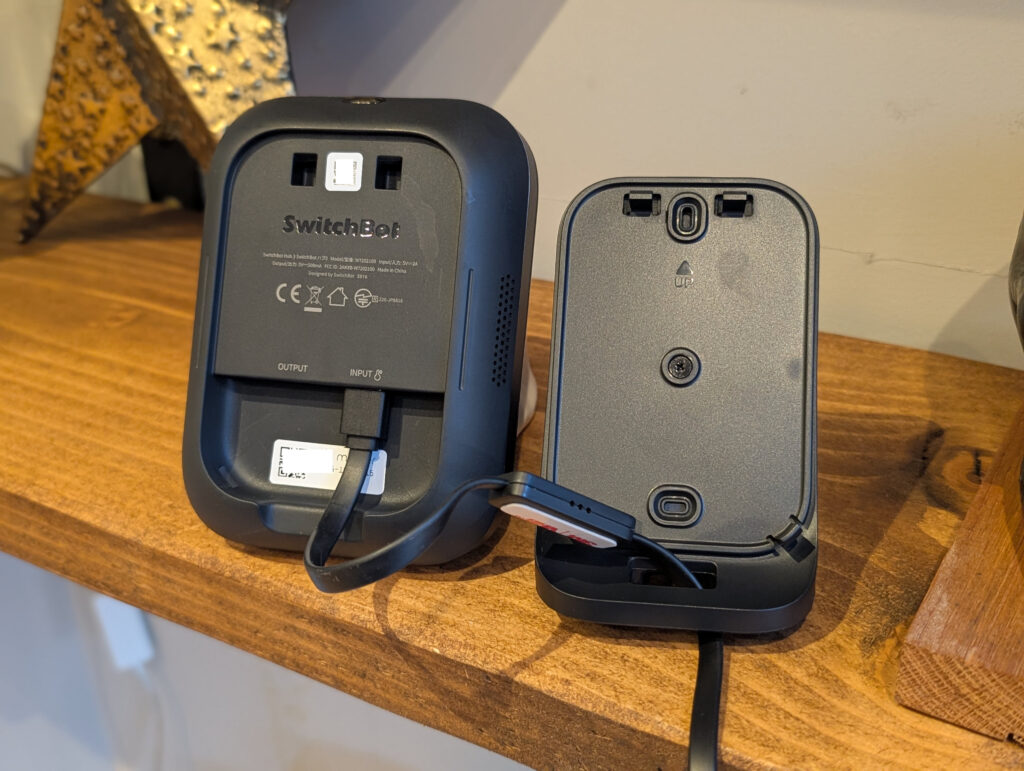
The Hub 3 has been completely redesigned and looks much more premium than the relatively cheap-looking other hubs. It is much more substantial and has a better stand rather than the pop-out stand of the Hub 2.
The display is now a black and white proper LCD which has some limited customisations on what your can display. You then have four buttons (technically 5 with the on/off) plus a dial which can be used to control heating.

The temperature and humidity sensor is located on the USB cable. This may seem like an odd design decision but it keeps the temperature sensor away from any warmth given off from the electronics in the hub.
Set Up
The initial set-up is similar to most IoT devices. This has Bluetooth, so the app will automatically detect the hub. You then place it into pairing mode, provide the 2.4GHz SSID details and wait for it to pair up.
When I initially reviewed the Hub 2, I experienced intermittent connectivity issues, but this hub worked perfectly the first time.
SwitchBot App Features
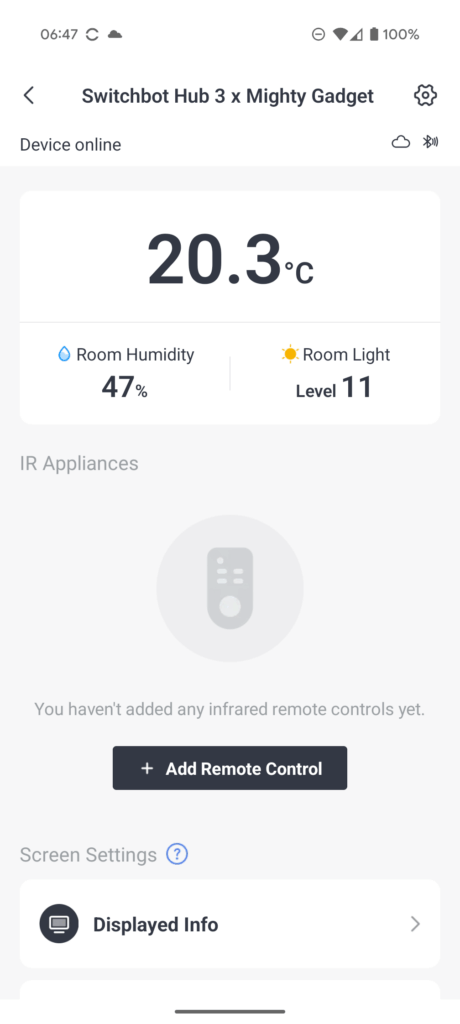
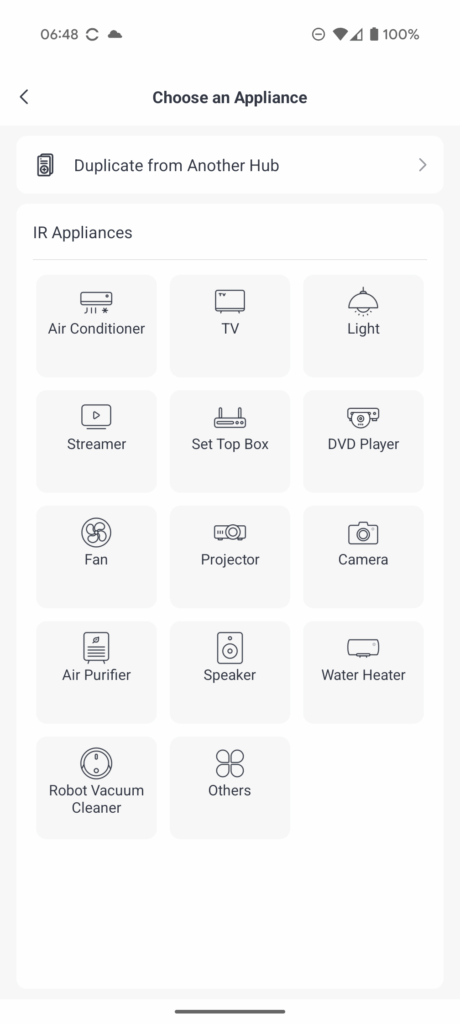
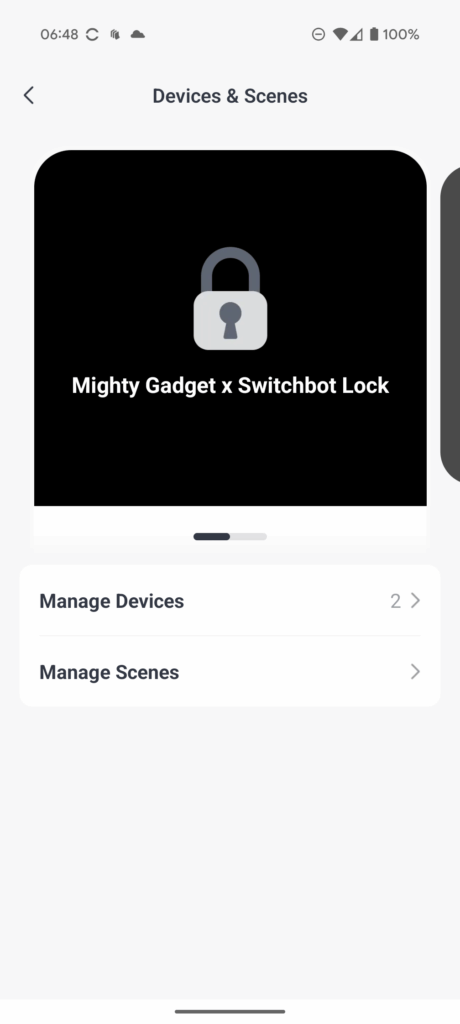
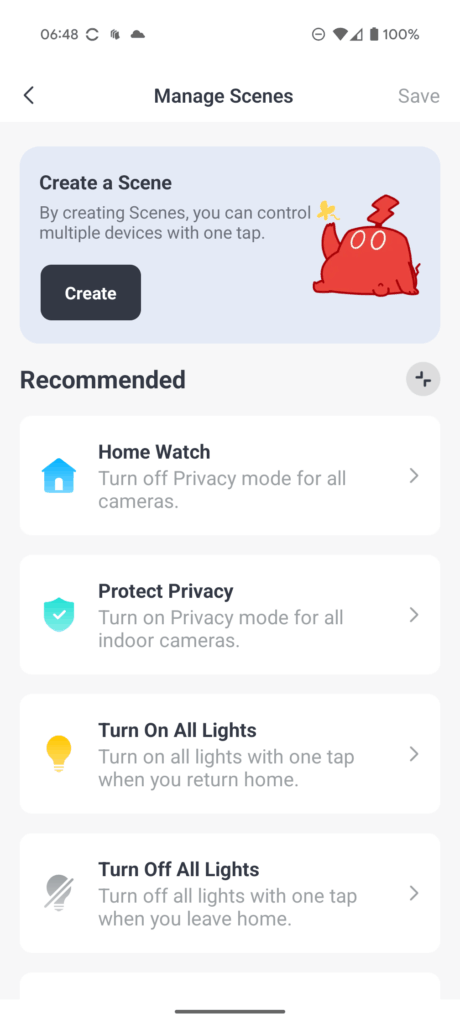

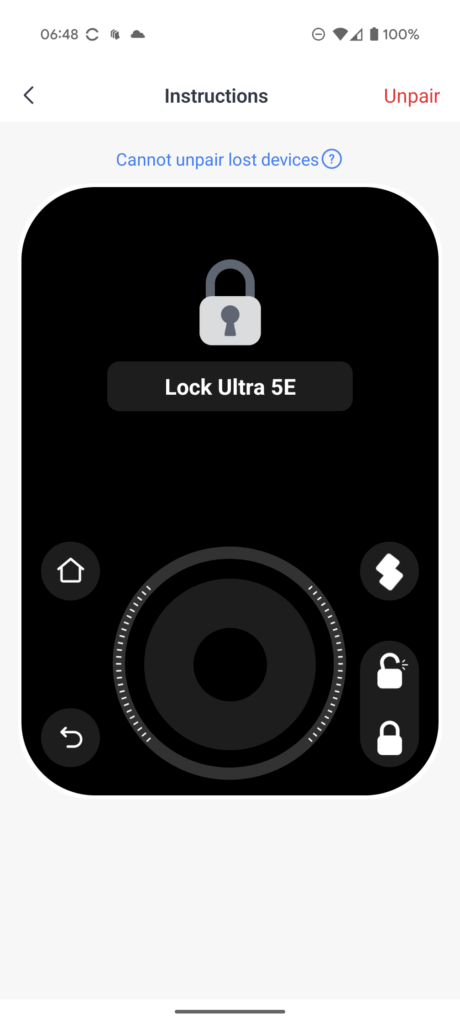

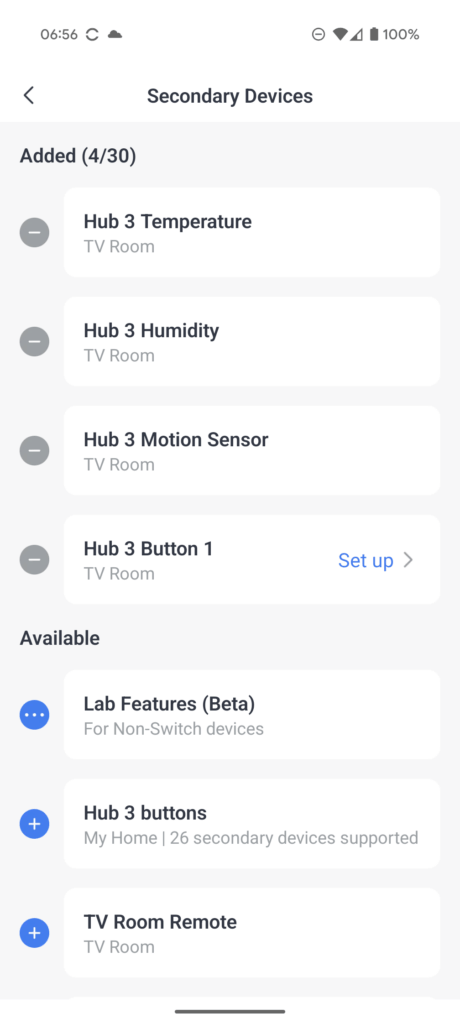
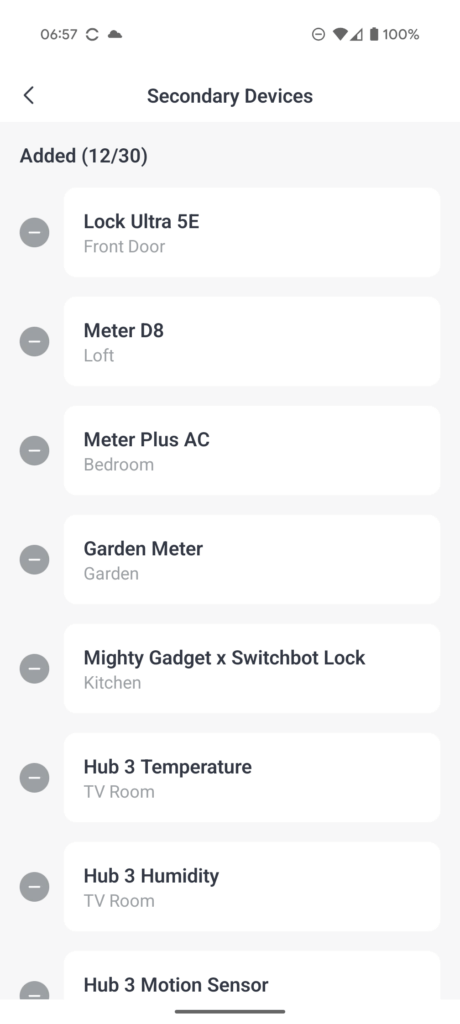
If you have used a previous SwitchBot hub with the over UI is mostly the same and intuitive.
When you go into the home screen, you can view the current temperature, humidity and light levels, plus access any controls for the devices you have set up for IR control.
Unlike the other hubs, this allows you some customisation of the information displayed.
Under the settings panel, you can customise various functions:
- Device Settings – Which includes options for detection sensitivity
- Alert Settings – including lock status voice alert (where it will announce lock/unlock/faults), temperature, humidity, and more.
- Calibration – for temperature and humidity
- Doorbell – When paired with a video doorbell
- Alarms – General scheduled alarms
- Do not disturb settings
- Logs
- Wi-Fi Settings
- Settings for third-party services, including Alexa, Google, SmartThings, Homey, IFTTT and Matter
- Matter setup
Matter and Home Assistant

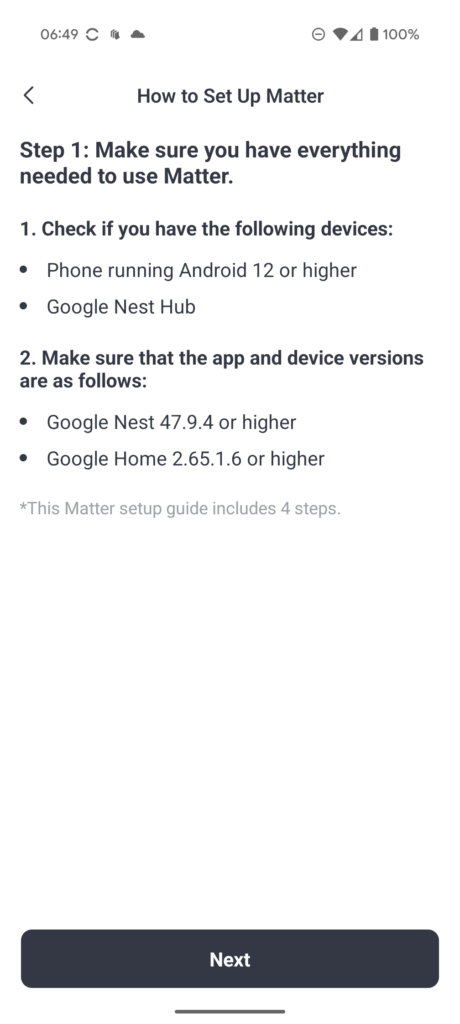
One of the main advantages of this hub over Hub 2 is the ability to add 30 secondary devices, which will then be passed through via Matter to different smart home ecosystems.
For Home Assistant, the setup procedure is simple and the same as any other Matter-enabled product. You need to use the Home Assistant mobile app, and from within the SwitchBot app, you go to Matter set up, generate the QR code, copy the number and paste it into Home Assistant.
At first, I didn’t have any devices bound to the hub, so it just showed the single devices in Home Assistant. When I added devices, they showed within Home Assistant immediately without any additional setup.
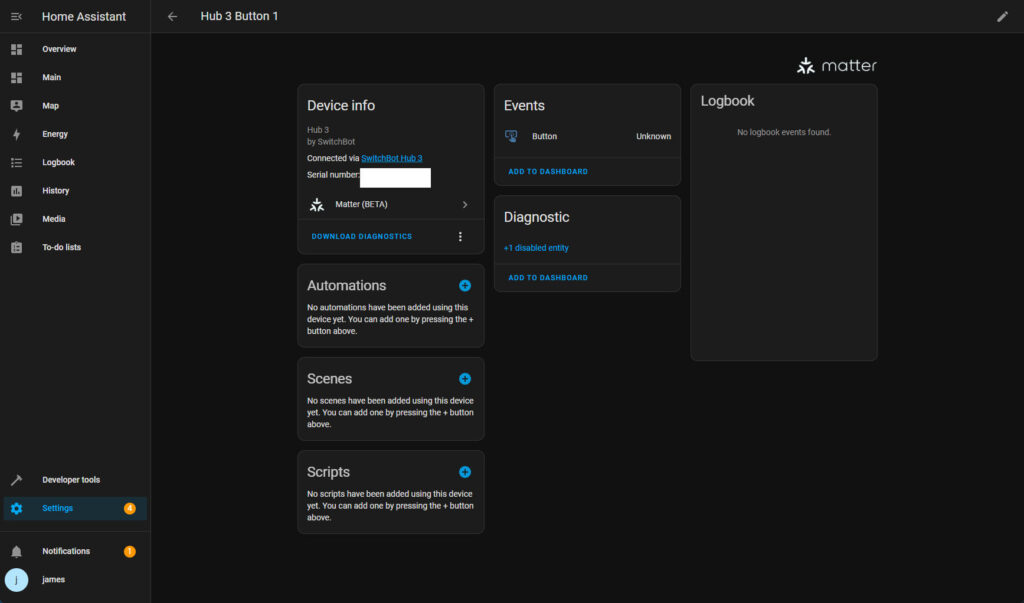

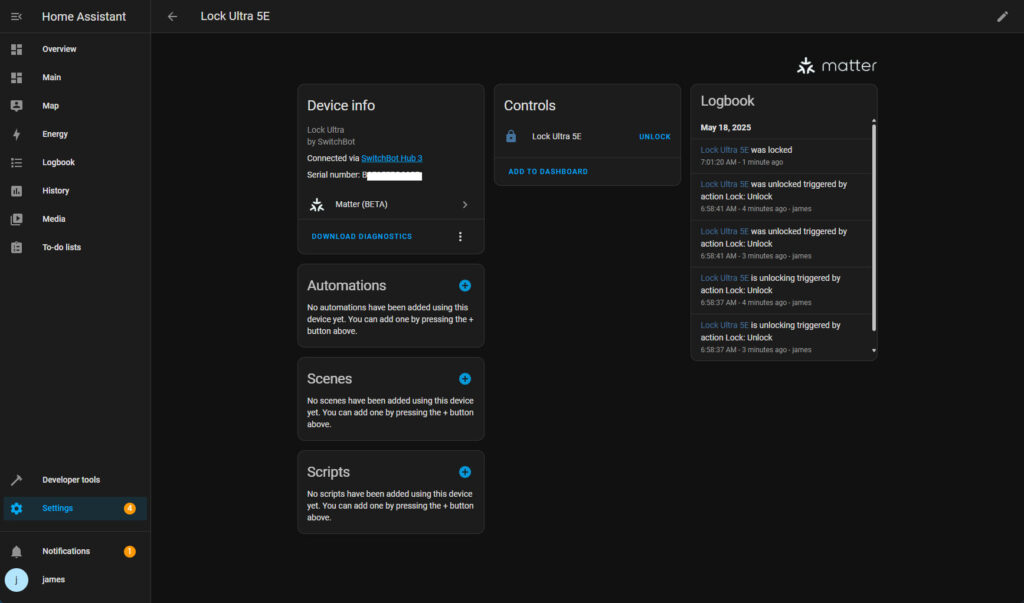

I have done some limited testing with this. My two locks are paired up, and locking and unlocking are effective from within Home Assistant.
I can then set up automations based on triggers from these devices. So, for the lock, when it is triggered as opening, I can set my Philips Hue lights to come on.
One feature I would have loved is for events from the Keypad Vision to be available. I am unsure if this is possible due to the limitations of Matter, but I would have appreciated the ability for Home Assistant to trigger actions when the Keypad Vision detects either my face or fingerprint, unlocking the dock, which would have allowed a much more bespoke automation to be triggered.
Additionally, the dial events are not passed over to Home Assistant. Again, I think this is more of a limitation of Matter than an issue with SwitchBot. It would have been good to have full control over my Tado X heating via the hub.
Day-to-day use
The overall user experience is similar to the Switchbot Hub 2, but with a few additional features, including on-device controls and the information it displays.
The hub itself displays the temperature and humidity just like the Hub 2, but now you can set it up to display the weather forecast and the lock status on the main screen.
With the Hub 2, you could map a scene to the on or off button, but with the Hub 3, you have several physical controls, including a home button, back button, on/off buttons and a scene button.
However, with this, you don’t have the option to set scenes directly. Instead, when you add a device, you gain controls for that device. For the devices I added, I wasn’t able to customise the controls, they were pre-defined. For my two smart locks, the on/off buttons represented lock and unlock.
I have not had much need to use the on-device controls, but I can see the appeal. If I still worked at home, it would be great on my office desk, allowing me to get doorbell alerts and lock and unlock the door remotely, if needed.
Just like the Hub 2, when you go into the app, you can view historical data for temperature and humidity. You can also change the data source. I have left it to the sensor built into the cable, but I have the option to use one of the Indoor/Outdoor Thermo-Hygrometer I have around my home.
Price and Alternative Options
The SwitchBot Hub 3 is priced at £129.99 in the UK and is available through the SwitchBot official website and Amazon UK store.
SwitchBot has three other hubs:
- SwitchBot Hub Mini – £35 RRP
- SwitchBot Hub Mini Matter Enabled – £70 RRP
- SwitchBot Hub 2 – £80 RRP
Overall
The SwitchBot Hub 3is a logical evolution of the Hub 2. It has all the same features and more. The overall appearance has been improved, and the addition of a dial and physical buttons gives you greater control over your connected devices.
For me, the main benefit is the 30 devices you can connect to other smart home ecosystems with Matter. The older Hub 2 was severely limited with just 8 devices, meaning you would need multiple hubs if you were heavily invested in SwitchBot.
The downside is that this costs quite a lot more at £130. I am not sure I would pay the extra £50 just for the new design and physical controls, but, as someone who has more than 8 SwitchBot devices in my home and because I use Home Assistant, the extra £50 is easily justifiable as it saves money over buying additional hubs.
The only other thing I would have liked from this hub is the integration of a Thread Border Router, but this is more wishful thinking as the SwitchBot devices all use Bluetooth.
Overall, the SwitchBot Hub 3 is excellent and is a much-needed addition to the SwitchBot range of hubs due to the increased capacity for devices passed through Matter.
SwitchBot Hub 3 Review
Summary
The SwitchBot Hub 3 stands out as a major upgrade from its predecessor, the Hub 2, making it a more attractive and practical solution for users who rely heavily on SwitchBot products and want to integrate them into Matter-enabled smart home ecosystems such as Google Home, Apple Home, or Home Assistant. With support for up to 30 devices, significantly improved IR performance, and new physical controls, the Hub 3 not only enhances functionality but also streamlines automation for smart home enthusiasts.
In real-world use, the experience is familiar for existing SwitchBot users but with some meaningful improvements — including environmental monitoring, broader Matter integration, and more responsive IR control. It’s clear that SwitchBot has taken feedback from earlier models to develop a more complete and versatile hub. While the price may be a sticking point for casual users, it offers excellent value for users with larger SwitchBot setups or those invested in wider home automation platforms.
Overall
90%-
Overall - 90%90%
Pros
Supports up to 30 SwitchBot devices through Matter (compared to just 8 on Hub 2)
Physical controls including rotary dial and dedicated buttons for direct device interaction
150% stronger infrared signal compared to previous models
Comprehensive environmental monitoring with temperature, humidity and light sensors
Cons
Relatively high price point at £129.99
Limited customisation options for the physical controls
Some events (like Keypad Vision face/fingerprint recognition) aren’t passed through to Matter
Dial events aren’t available in Home Assistant

